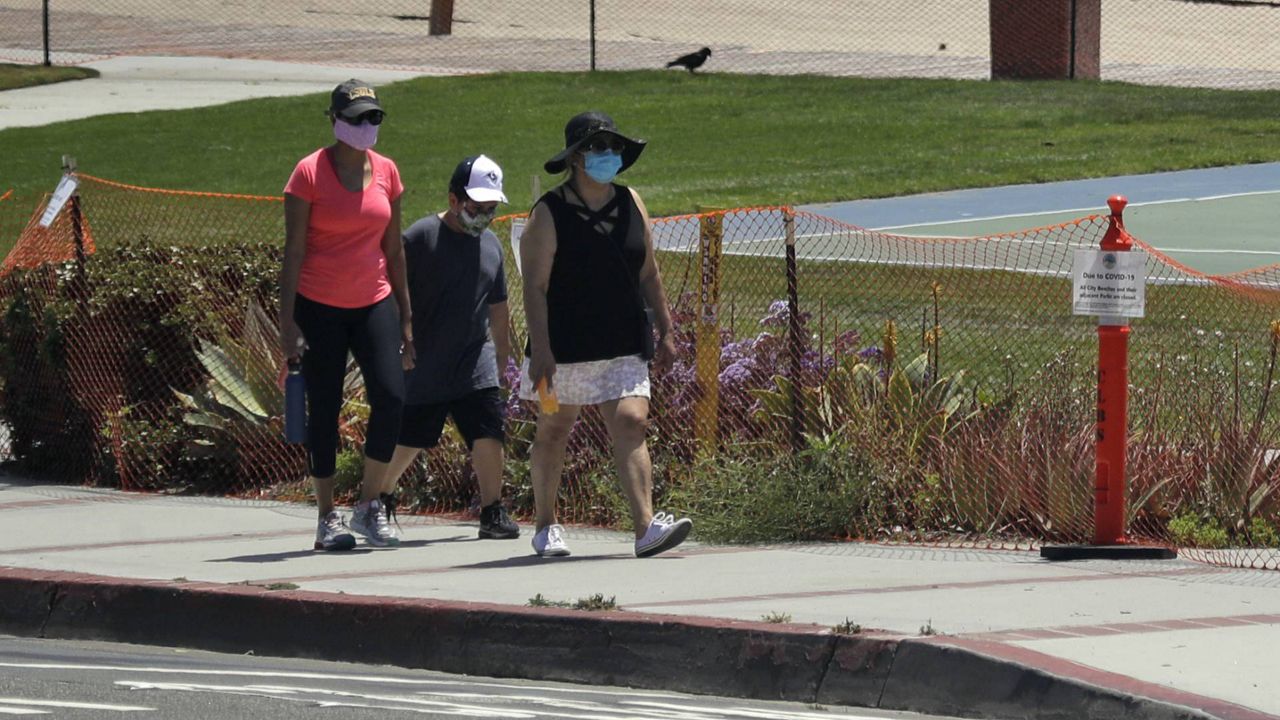SANTA ANA, Calif. (CNS) — Orange County Monday reported 117 newly diagnosed COVID-19 cases, raising the cumulative total to 55,892, but the death toll was unchanged at 1,341.
Orange County CEO Frank Kim told City News Service last week that the county would like to see daily diagnoses below 130, so Monday's case number was welcome news after Sunday's report of 244 cases and one death. To get to the less-restrictive orange tier established by the state, the county needs to average closer to 130 daily cases, Kim said.
Last week, 54 deaths were reported, down from 72 the week before and 77 the week before that.
Hospitalizations inched up from 164 on Sunday to 167 on Monday, while the number of intensive care unit patients dipped from 57 to 56.
The change in the three-day average of hospitalized patients went from -4.1 percent to -5.8 percent. The county has 31 percent of its intensive care unit beds and 67 percent of its ventilators available.
The positivity rate, which is reported each Tuesday, inched up from 3.1 percent two weeks ago to 3.2 percent last week, and the daily case rate per 100,000 people rose from 4.4 to 5.2, which is higher than the cutoff of 3.9 to qualify for a move from the red to the orange tier.
Kim told CNS on Friday that the county is averaging 4.9 cases per 100,000 residents, down from a peak of 5.4 on October 5.
"Our numbers are heading in the right direction," he said.
To qualify for the orange tier, the positivity rate must be 2 percent to 4 percent, and the case rate per 100,000 must be 1 percent to 3.9 percent.
Moving to the orange tier would mean retail businesses could operate at full capacity, instead of 50 percent as required in the red tier. Shopping malls could also operate at full capacity, but with closed common areas and reduced food courts, just as in the red tier.
According to OCHCA data, 948,671 COVID-19 tests have been conducted, including 4,504 reported Monday. There have been 49,947 documented recoveries.
Dr. Clayton Chau, director of the OCHCA and the county's chief health officer, said increased testing can lower the positivity rate, but it can also lead to an increase in the case rate per 100,000. The state introduced a health equity measure, which launched last Tuesday, to help counties address high case counts concentrated within certain ZIP codes that include high-density housing and language barriers, among other issues.
Orange County got a head start on that weeks ago with its Latino Health Equity program, which raised awareness of coronavirus within hotspots in Santa Ana and Anaheim, Chau said. Positivity rates as high as 20 percent have fallen to single digits in some of those neighborhoods, Chau said.
There is an "accelerator" in the state's formula that if the positivity rate makes it to the least-restrictive yellow tier but the case rate is in the red, then a county can move up to orange, Chau said.
At a news conference on Thursday, Orange County Board of Supervisors Chairwoman Michelle Steel called for more "local control" on determining the reopening of businesses, decrying "Sacramento's one-size-fits-all" policy that she said "punishes" Orange County with the health equity measure that makes it more difficult to move up to the orange tier.



